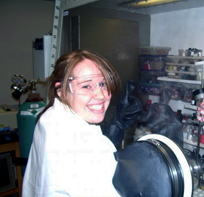Biography
I am originally from Kansas City, MO, and I received my B.S. in chemistry at Truman State University in Kirksville, MO in 2009. As an undergrad I worked under Dr. James M. McCormick on oxidation of Ru and Cr complexes using ozone. I also worked with Dr. H. David Wohlers on the development of a tactile periodic table for use as an educational tool for the visually impaired.
Research Projects
A new class of potentially redox non-innocent ligands includes molecules containing both pyridyl and pyrrolide moieties. One such ligand is 2-pyridylpyrrolide.
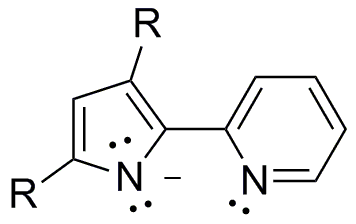
Transition metal complexes containing these ligands have the potential to store electrons and then transfer them to substrates.
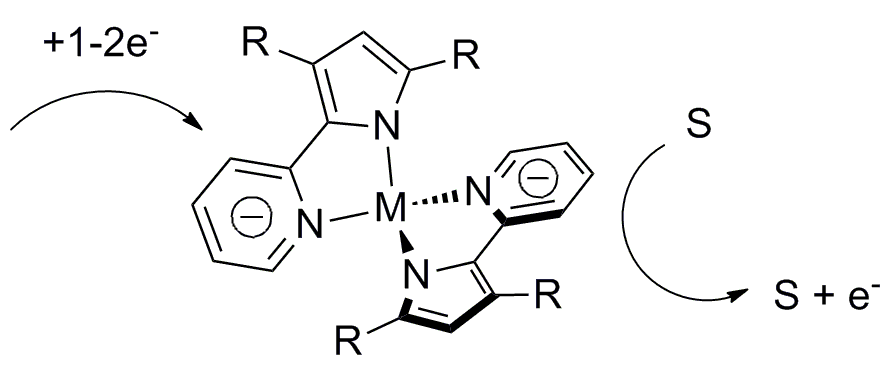
Addition of reducing equivalents to divalent iron, cobalt, nickel, and copper bis-pyridylpyrrolide complexes results metal-based reduction followed by ligand rearrangement!
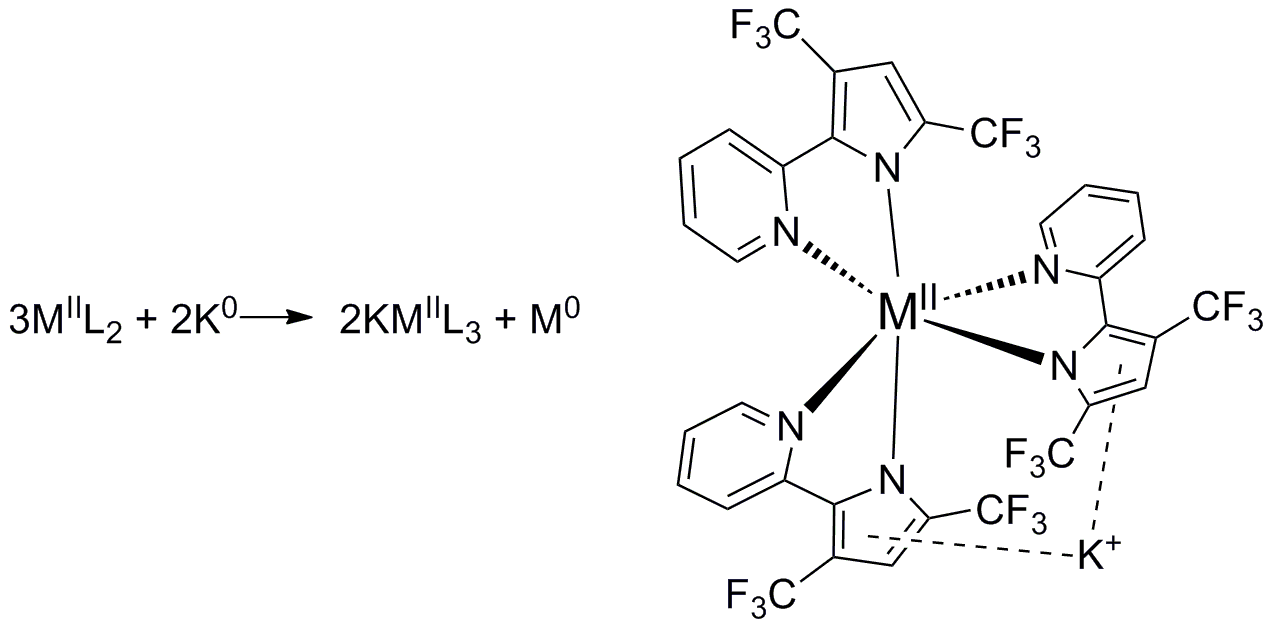
Cyclic voltammetry shows two oxidative waves for NiL2.
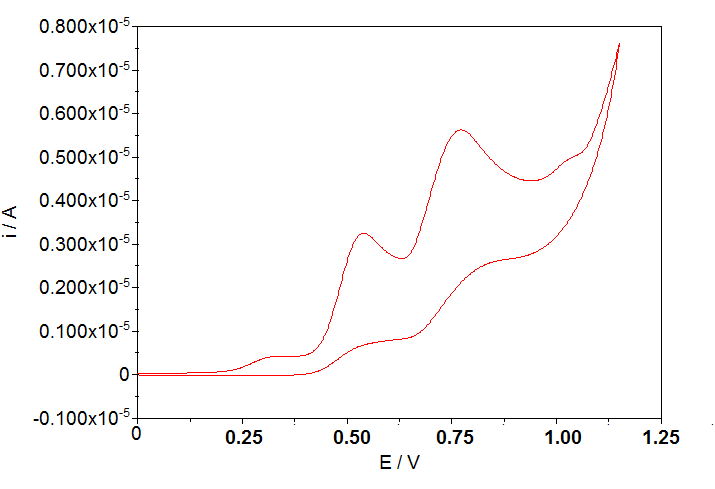
However, upon addition of chemical oxidizing equivalents to either CuL2or NiL2complexes a ligand-based oxidation occurs, followed by further reactivity of the presumed radical species to form free protonated ligand and a secondary organic product. I am currently working on modification of the ligand to inhibit degradation of the radical cationic species.
Installation of only one ligand onto the metal center will result in a more unsaturated (reactive) species, so work is currently underway to synthesize three or four coordinate divalent metal complexes containing only one pyridylpyrrolide equivalent. For example:

In addition, a ligand containing one pyridyl and two pyrrolide moieties has been developed by Dr. Nobuyuki Komine (a). I am working to install this dianionic ligand onto divalent late transition metals to form neutral complexes whose redox properties will be investigated.
An analogous ligand containing one pyrrolide and two pyridyl moieties has been previously prepared, though application of redox non-innocent properties has yet to be investigated (b).
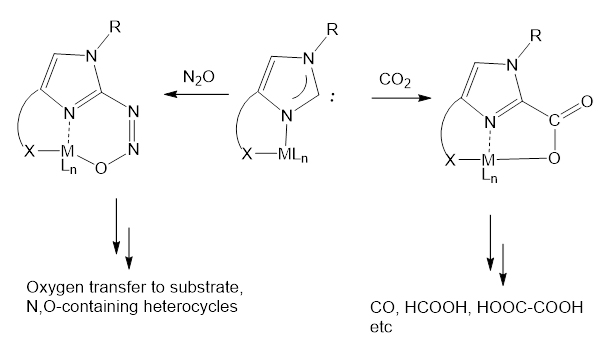
I am working to compare the redox properties of these two ligands, which can then be applied for use in chemical transformations.

